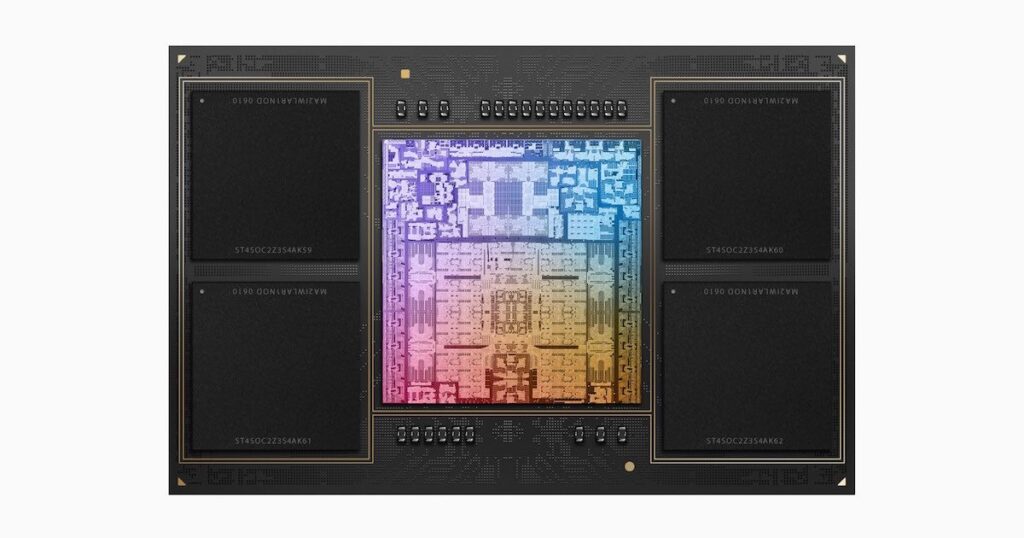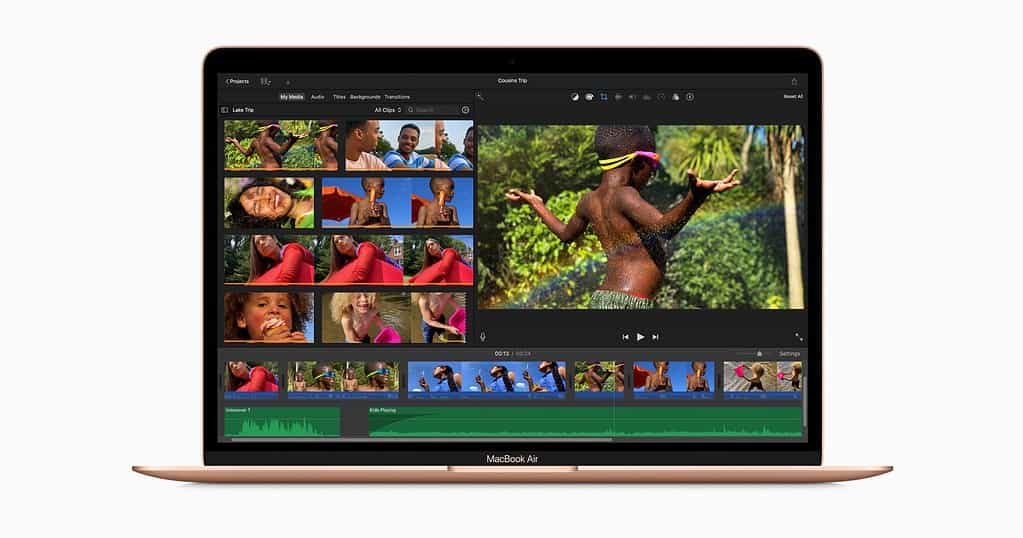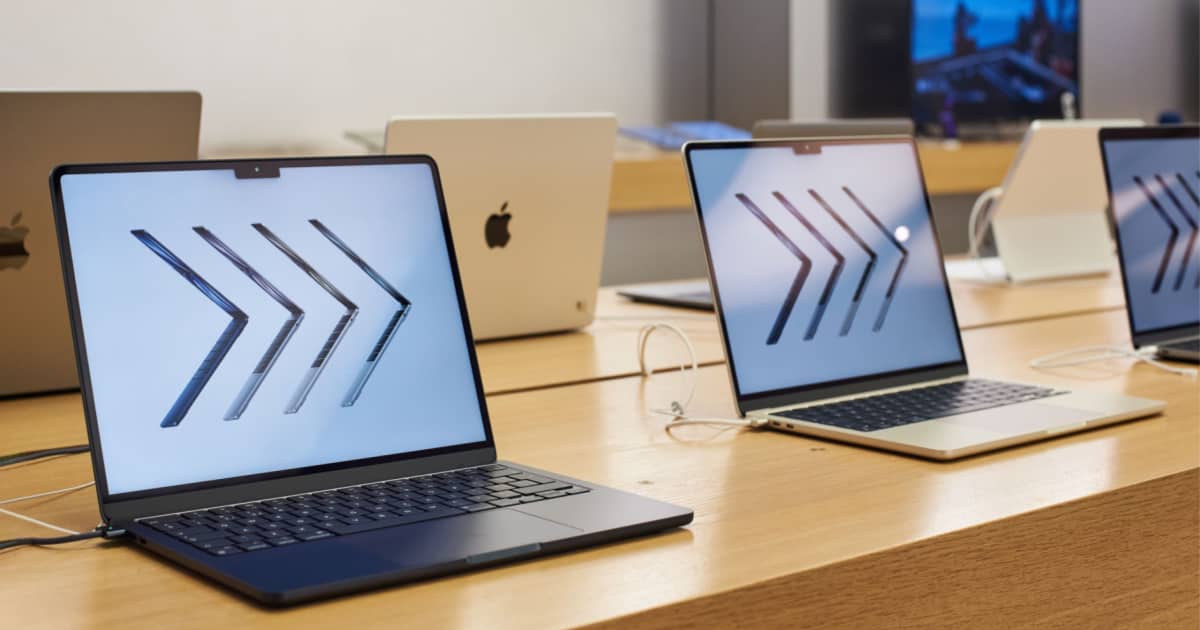The first MacBook Air to have 8GB of RAM on the base offering was the 2017 model. Since the 2018 Mac Mini refresh, no Apple computer has had less than that. But we’re in 2024, and a lot of people now wonder if 8GB RAM is STILL enough for a MacBook Air. Let’s dive in.
Memory Paging: When 8GB of RAM Is Actually More Than 8GB
What if I told you your 8GB Mac has actually more than 8GB of RAM? Seems counterintuitive, I know, but it’s kind of true. “Kind of” because this isn’t “real” RAM, but actually paged memory.
Memory paging (or swapping) isn’t anything new, computers have been using this technology for decades. It consists of “borrowing” some of the device’s storage to use as lower-speed RAM. When something stored on regular RAM stays unused for long, the Operating System (OS) moves it to the swap memory.
Apple Silicon Macs Have Blazing Fast Storage Speeds

In its early days, memory swapping severely hurt performance. That’s because regular storage, be it either SSDs or hard disks, was way slower than RAM memory. Therefore, swap was only used as a last resort. RAM is also thousands of times faster than regular storage on latency — the time it takes for data to travel from the RAM to the processor.
The last Intel-powered MacBook Air, released in early 2020, was able to write data at about 1,100 MB/s. An M1 model, in turn, more than doubles that: it reaches 2,300 MB/s.
That’s still the kind of speed RAM had in the DDR2 generation, used about 20 years ago. The M1 MacBook Air’s RAM is about 20 to 30 times faster. While I couldn’t find latency values for Apple Silicon Macs, the best consumer SSDs are about 2,000+ times slower than RAM.
How can that be “blazing fast”? The key here is how much of that is perceptible to the end user. Even though it’s between 30 and 2,000+ times slower than RAM, an M1 Mac’s storage is “fast enough” for that. Memory swapping happens transparently, so you don’t even notice it.
macOS Is Quite Light
I have macOS Ventura running (via OCLP) on a 2012 MacBook Pro, which has a dual-core i5 CPU. I only downgraded from Sonoma because it wasn’t running astonishingly fast. If it had the beefier quad-core i7, I would run the latest OS on a 12-year-old Mac. That’s how light macOS is.
Also, not only swapping happens so fast you don’t even realize it, but it doesn’t happen as frequently as you think. Unless you’re frequently with a dozen apps and 20+ tabs open, there’s little chance your Mac will use swap often.
The MacBook base model’s 8GB of RAM may be enough even for some specialized use cases. Graphic designers, unless they deal with huge images on a daily basis, for instance, are safe with that much RAM. Music producers that don’t frequently work on projects with 30+ tracks, too, likely won’t need to go over 8GB.
Macs being able to do a lot more than PCs with similar hardware has been the truth for years. Considering the huge performance gains with the M-series processors, that is nowadays truer than ever.
Consider Your Needs, but Also Future-Proofing

There is one aspect, though, that weighs against getting 8GB of RAM: future-proofing. If you consider your present needs, it’s likely that 8GB covers them. In the future, however, this may change — even if what you do with your computer doesn’t change.
That’s because, as time goes on, hardware requirements tend to get higher. A regular website, like this page you’re reading, requires way more processing than a similar one from a decade ago. The same can be said of a music streaming app, a game, an instant messenger, and virtually anything. Therefore, even if a MacBook with 8GB of RAM is enough for you today, this may change quickly.
That’s one of the reasons many people in the tech community say “You’ll never regret getting more RAM”. The fact that Macs have soldered memory, that can’t be upgraded later, makes this statement even more accurate.
Trade-Ins and Resales Are Also a Possibility
Still, some things are easier said than done. Upgrading from 8 to 16GB of RAM on most Macs costs a whopping $200. That’s kind of a fixed price: 16GB upgrades (8 to 24 or 16 to 32GB) cost $400. Similarly, upgrading from 32 to 64GB sets you back $800; getting a Mac Pro from 64 to 192GB demands $1,600. For the cost of Apple’s 8GB upgrade, you can get two 48GB DDR5 sticks, 96GB(!), from a reputable online store.
If you’re low on cash, but still consider 8GB may not be enough in the long run, why not improvise? Get an 8GB MacBook now and, in a couple of years, switch to a 16GB — or even 32GB, perhaps — model. If you’re not sure if you’ll be able to afford that, remember that Apple devices have an amazing resale value. If anything, you can even trade in your MacBook when purchasing a new one and get a significant rebate.
Purchasing a new computer every couple of years is definitely not a sustainable solution. It doesn’t hurt to do that only once, however, if you need to get things sorted in a practical way.
8GB Isn’t a Beastly Amount of RAM, but It May Be Enough for Your MacBook

It may seem weird that, when talking about RAM, there’s more to consider than just, well, RAM. But that’s exactly how things are.
Modern Macs have decent swapping, and macOS is so well optimized that MacBooks with 8GB of RAM are, often, enough. They likely won’t excel at heavy-duty workflows, but they’ll cover the needs of the vast majority of users.
